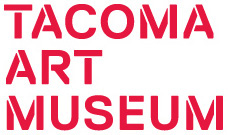Selma Waldman
Selma Waldman grew up in Texas and earned her BFA in fine art from the University of Texas, Austin in the mid 1950s. In 1957, she and her family moved to Seattle where she lived and worked the rest of her life. In 1959 she was awarded a Fulbright scholarship to Berlin. She talked about her time in Berlin as the moment that she encountered the history and lingering realities of the Holocaust in a starkly direct way that greatly affected her as an artist of Jewish heritage. That experience redirected the intent and content of her artwork. From that point on her work focused on social ills, abuses of power, and human suffering.
Waldman became a tireless social activist for peace, justice, and civil rights. She worked as an independent teacher offering drawing classes at the University of Washington and Free University in Seattle, as well as other local schools. She also published and illustrated a number of books focused on social justice issues including a series of eight small books of drawings and writings that documented colonial abuse in Kenya and life in South Africa under apartheid. She preferred to work in charcoal and pastel, finding the inherent fragility of both media to be a poignant undertone to her images of human abuses against each other. Her primary subject was the human body used in expressionistic ways to convey her messages. Because of her difficult subject matter, galleries were slow to exhibit her work until late in her career but regardless she created a large body of work. Her archives are in the University of Washington Special Collections and her artwork in private collections as well as public institutions internationally including the Jewish Museum in Berlin, the Terezin Ghetto Museum, Czech Republic, the Modern Art Museum of Fort Worth, and Dallas Museum of Art.
Artist's obituary
https://www.seattletimes.com/seattle-news/obituaries/selma-waldman-77-seattle-artist-better-known-in-germany/
[accessed October 2021]



